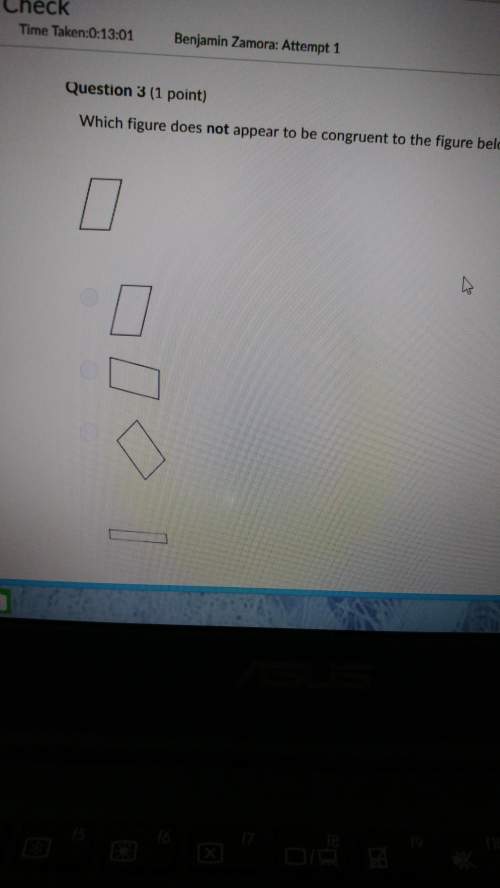
Mathematics, 21.01.2020 09:31, kamrulh278
Suppose the polynomial f(x) has the following end behavior: as x approaches infinity, f(x) approaches infinity, and as x approaches negative infinity, f(x) approaches negative infinity.
which of the following polynomials could represent f(x)?
there may be more than one correct answer. select all correct answers.
a. −x3
b. −2x^5−x^3−4x
c. x^3+10x^2−5x+5
d. x^2+x−3
e. 7x^5+4x^2
f. x+8

Answers: 1
Other questions on the subject: Mathematics



Mathematics, 22.06.2019 03:40, AdiGirlBrainly
Analyze the solution below. 7 3 x = −2 7 3 x(3 7 ) = −2(3 7 ) x = − 6 7 what property was used to solve the equation? property of opposites division property of equality addition property of equality multiplication property of equality
Answers: 1

Mathematics, 22.06.2019 04:00, ridzrana02
What is the answer to this problem? ignore the work. what is the correct answer?
Answers: 3
Do you know the correct answer?
Suppose the polynomial f(x) has the following end behavior: as x approaches infinity, f(x) approach...
Questions in other subjects:

















